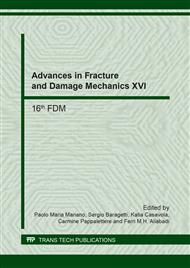p.272
p.279
p.283
p.287
p.291
p.295
p.299
p.303
p.309
Optimization Methodology for an Automotive Cross-Member in Composite Material
Abstract:
Optimization methods are useful and effective techniques for the design and development of components from the weight reduction point of view. This paper presents an optimization methodology applied to the front cross-member of a Maserati chassis for metal replacement application with the objective of the minimization of the mass of the structure using composite materials. Firstly, a topological optimization of the front side of the vehicle is performed, and the available design space is considered to determine the optimal load path of the design volume and, consequently, to assess a preliminary geometry of the component under scrutiny. Secondly, free-size optimization of the preliminary cross-member design is developed, initially neglecting and subsequently considering the manufacturing constraints. In addition, a linear analysis of the cross-member, modeled as a rigid component, is carried out to evaluate the maximum contribution of this component on the structural performance of the front side of the vehicle. Finally, size and shuffle optimizations are carried out on the new design concept to determine the number and the thickness of the composite plies, and the optimal stacking sequence, respectively, in order to fulfill the structural requirements. A comparison between the new composite structure and the aluminium Maserati cross-member is presented.
Info:
Periodical:
Pages:
291-294
Citation:
Online since:
September 2017
Authors:
Price:
Сopyright:
© 2017 Trans Tech Publications Ltd. All Rights Reserved
Share:
Citation:


